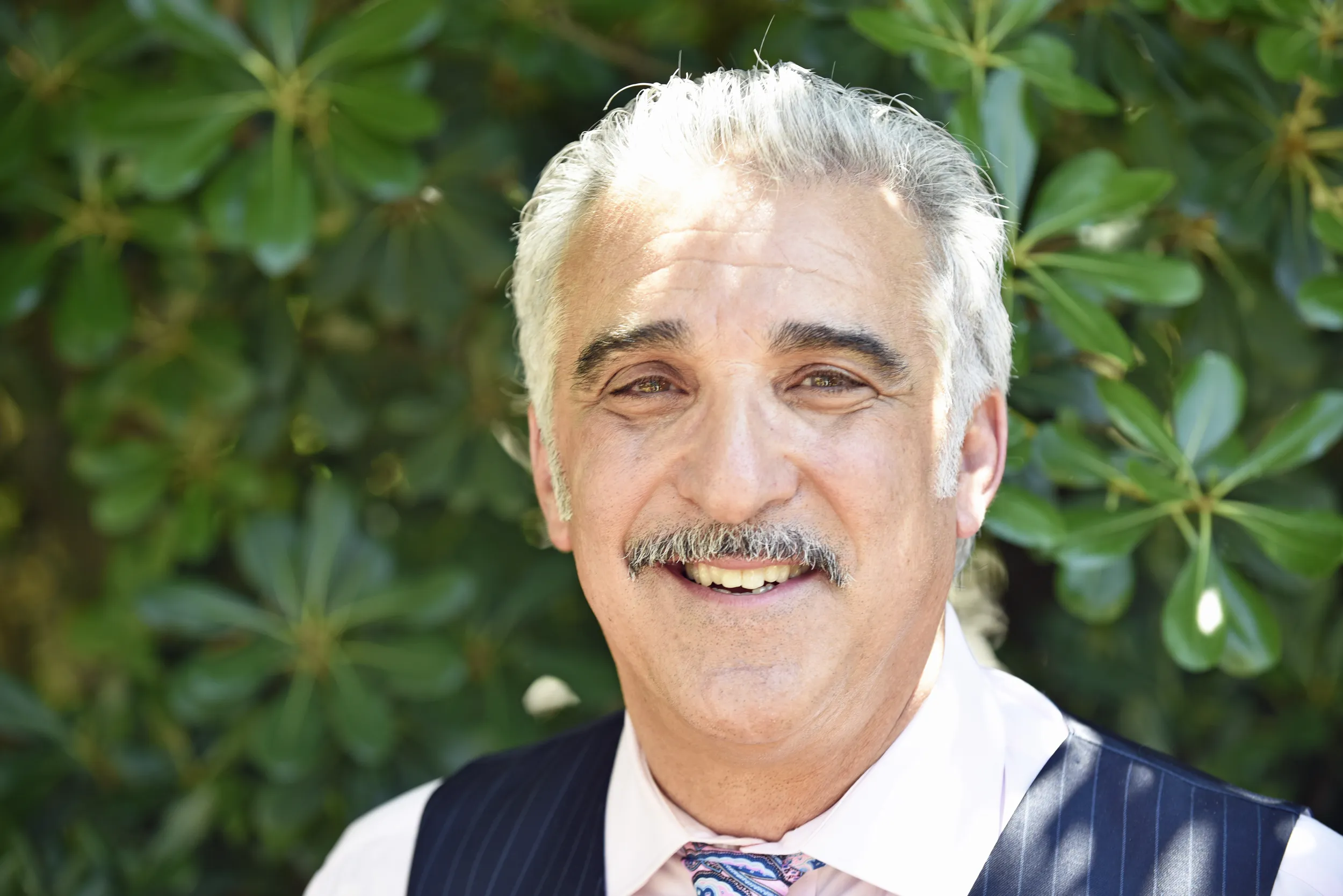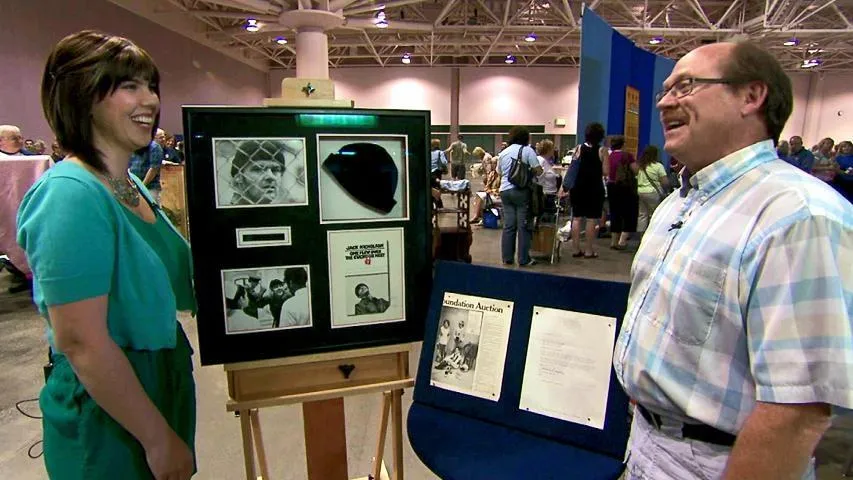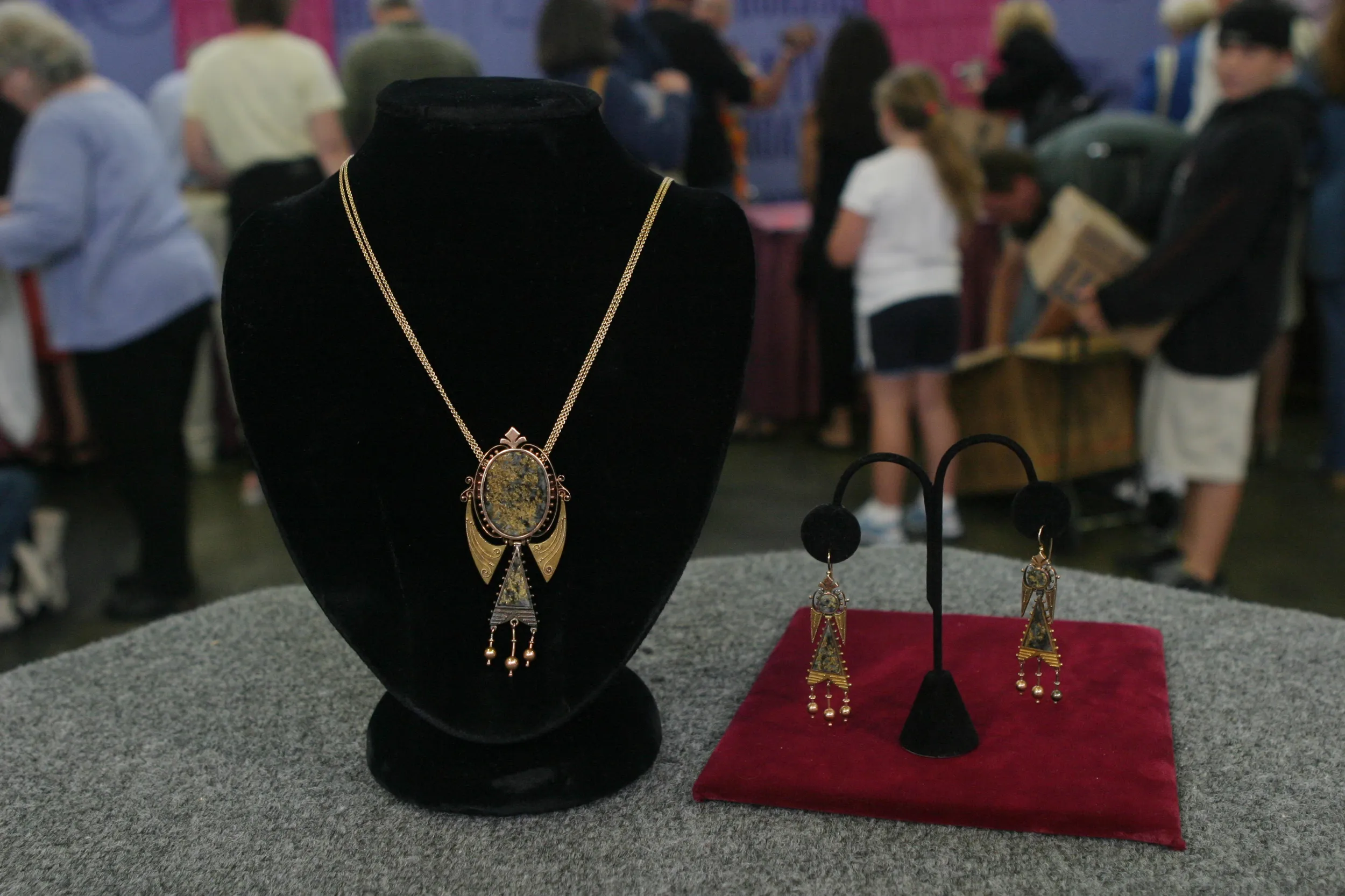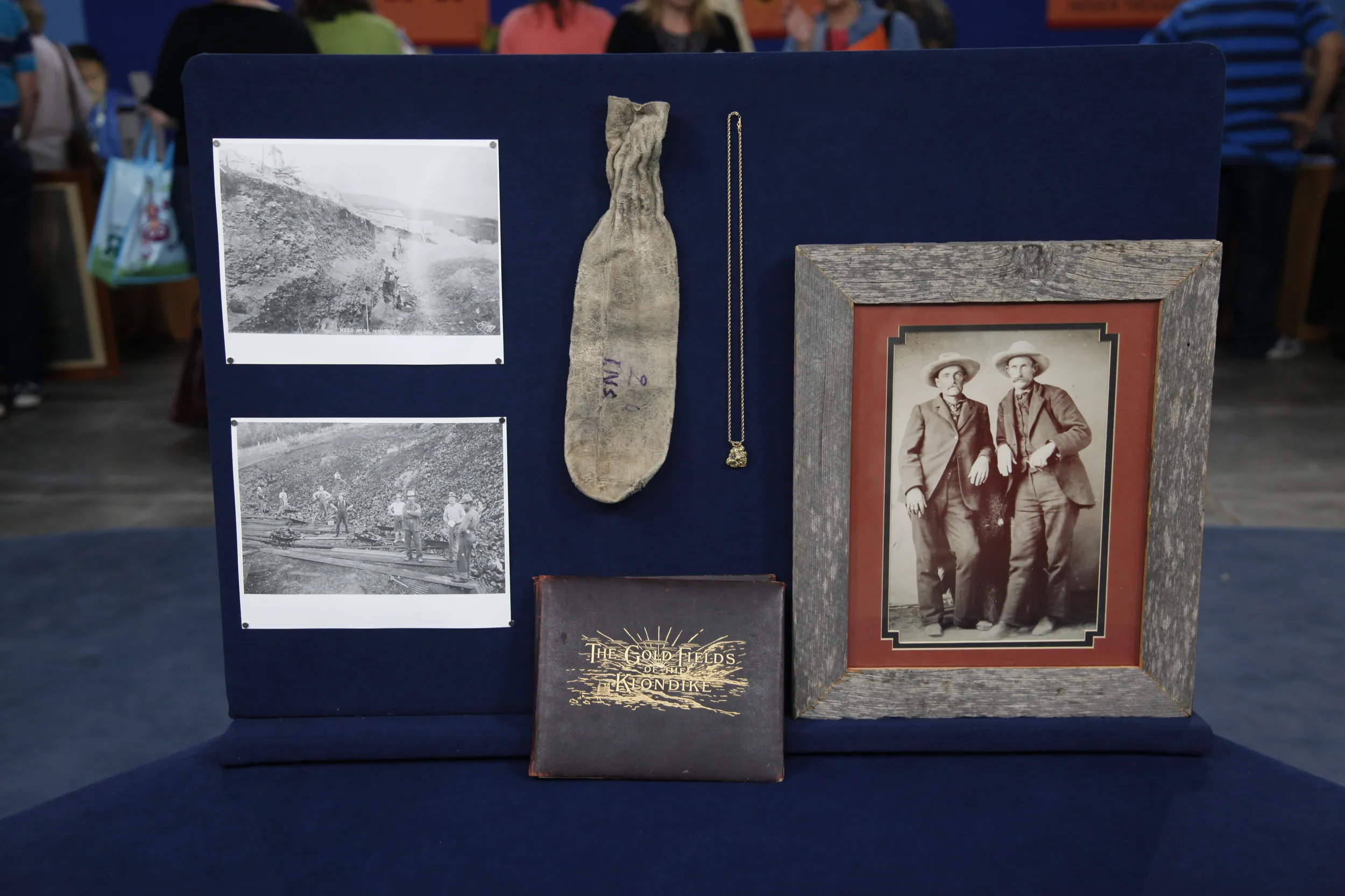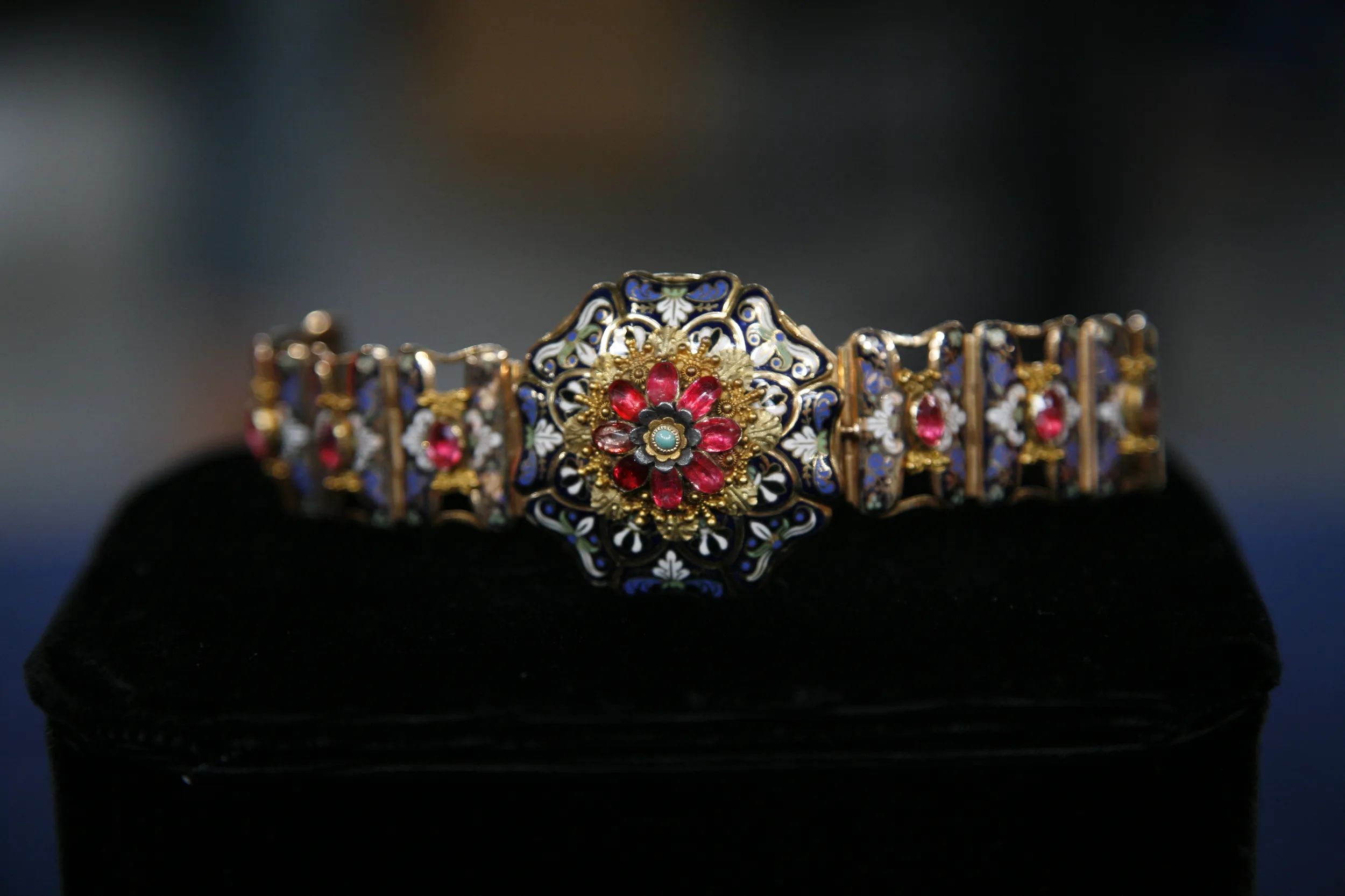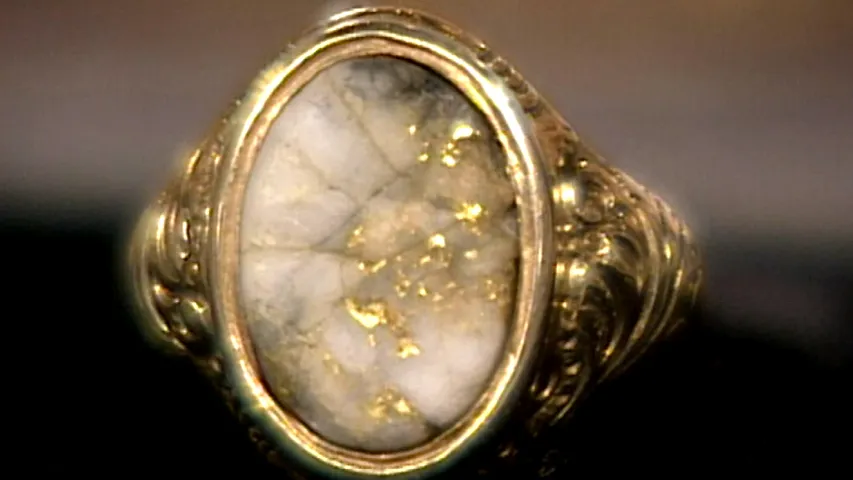GUEST: I have a Russian parasol handle that I purchased from an antique dealer in Minneapolis. He loved this parasol handle. He bought it in Iowa. And he knows that I collect parasols-- I have about 20 of them-- so he brought this handle to me and he gave me some information about it. And so after he walked me through the little treasures about it, I said, "I'll take it."
APPRAISER: What did you pay for it?
GUEST: $1,000.
APPRAISER: Let's talk about the two marks. The "72" references the quality of the silver. The "AT" stands for the person who made the piece.
GUEST: Okay.
APPRAISER: His name is Alexander Tillander. He has a pretty, pretty cool story. He worked in this Fabergè style from 1855 to 1918. He was born in the late '30s. But he came from a very, very poor family of farmers. And they sent him off to become a barber.
GUEST: A barber? Oh, my gosh.
APPRAISER: And he hated it. Couldn't stand it. So he took an apprenticeship and he became an accomplished jeweler. And many years later, he went to work in Carl Becks' shop in St. Petersburg. Now, Carl Becks was known for making items for royalty.
GUEST: Oh, okay.
APPRAISER: So he really took his trade to another level. And then he went out on his own. You don't see many parasol handles from him. What you see are boxes, things of this nature. Now, let's talk about the piece a little bit. Let's go to the one thing you can't miss right away: the enamel.
GUEST: Yeah, I love that. It's kind of like a robin's egg blue over silver. I love that. It's actually sparkling under this light.
APPRAISER: Right, so bingo, robin's egg blue is what we call it. What it is is guillochè enamel.
GUEST: Yeah.
APPRAISER: Once they put the silver down, they do all this engraving in the silver. Then they lay down this translucent enamel on top of it, and it pops.
GUEST: Yeah.
APPRAISER: And gives it that beautiful look we all love.
GUEST: Yeah.
APPRAISER: Next, I want to talk about the gold in the garland in the flowers.
GUEST: Yeah, the garlands and the flowers are beautiful. I'm a rose freak, and there's roses in there, so that has my heart going like this.
APPRAISER: Well, that's great. If a piece of jewelry or an object can make your heart do that, what's better than that, right? Well, you'll notice they're all different colors. You have the pink or rose gold, a higher copper content, you have the white, you have the green, and then you have this yellow. That's just such a nice little extra on the piece. Up on top, you have this nice piece of rose quartz that just kind of finishes it.
GUEST: Yeah, cabochon.
APPRAISER: Cabochon.
GUEST: Yeah.
APPRAISER: Smooth top.
GUEST: Yeah.
APPRAISER: The pink very much accents the blue and the other colors-- it's not overpowering. On the base over here, on the silver band, it says "1914," and clearly there's some type of a crest.
GUEST: Right, and I don't know what that means.
APPRAISER: It has a crown over it. This, I feel, is going to need further research. But what we do know is it has a tennis racket...
GUEST: The tennis racket I was wondering about that. What could that mean?
APPRAISER: Well, we talked to a few of my colleagues, and these guys loved tennis. It was huge back then. It was a huge, huge sport.
GUEST: Right.
APPRAISER: Now, we've got to get down to the value. So you paid $1,000. This market has really changed. It's even changed from five years ago.
GUEST: In which direction?
APPRAISER: Up.
GUEST: Oh, okay. (laughs)
APPRAISER: So in the auction world, we really feel this would sell for $10,000 to $15,000.
GUEST: Oh, my God.
APPRAISER: I think what you have to do is break out one of your parasols and finish it.
GUEST: Absolutely, absolutely-- one of the really frilly ones.
APPRAISER: And then go play lawn tennis. I'll come and hold it for you.
GUEST: Okay, great. Thanks, Kevin.
